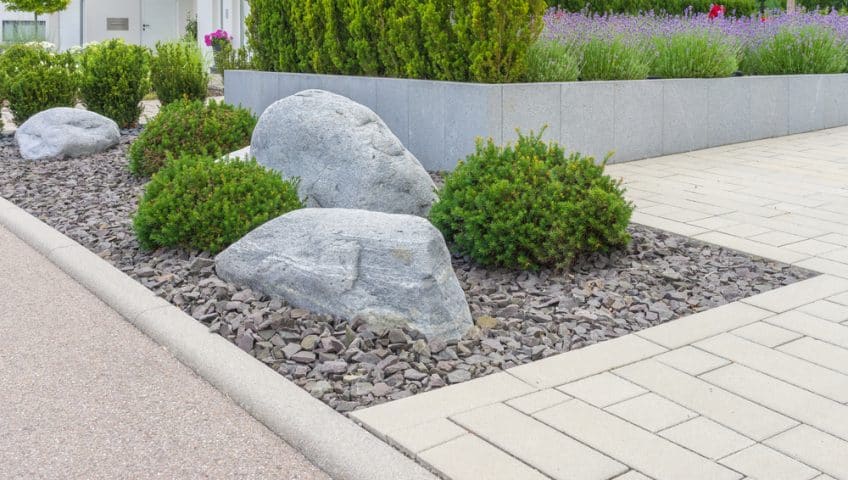Landscaping is more than just planting flowers and maintaining a lawn—it’s about creating a harmonious outdoor space that reflects nature’s beauty. One of the most striking ways to achieve this is by incorporating rocks and boulders into your landscape design. These natural elements add character, texture, and a sense of permanence to any outdoor space. Landscaping in Sydney often incorporates rocks and boulders for practical benefits like soil retention, pathways, and structural support.
Keep reading this blog to discover how you can transform an ordinary yard into a stunning and functional retreat by adding rocks and boulders to the design.
1. Enhancing Visual Appeal
One of the primary reasons homeowners and landscapers in Sydney opt for rocks and boulders in garden designs is their ability to create a sense of depth and contrast. Unlike plants, which can change with the seasons, rocks provide a year-round focal point that grounds the landscape.
The variety in size, shape, and colour of rocks allows for endless creative possibilities. Large boulders can serve as dramatic statement pieces, while smaller stones can be used to edge flower beds or define garden spaces. By mixing different textures—such as smooth river rocks with jagged limestone—you can create an engaging and multi-dimensional outdoor setting. Additionally, rocks can be arranged in clusters to mimic natural rock formations, enhancing the organic feel of the landscape.
2. Creating Natural Pathways
Pathways play a crucial role in any garden, guiding movement and connecting different areas of the outdoor space. Instead of traditional pavers or concrete, using rocks and boulders can add a more natural, rustic charm.
Flat stones, such as slate or sandstone, can be embedded into the soil to create stepping stones, while larger boulders can be used to define the edges of a path. For a dry riverbed effect, small pebbles or gravel can be layered between stepping stones, enhancing both functionality and aesthetic appeal. Landscaping in Sydney often incorporates such elements to blend modern outdoor spaces with the natural surroundings, ensuring a seamless transition between built and organic elements.
3. Sustainable Landscaping
One of the significant advantages of using rocks and boulders in landscaping is their sustainability. Unlike wood or synthetic materials, rocks occur naturally and require little to no maintenance. They do not degrade over time, making them a cost-effective and eco-friendly choice for garden design.
Rocks also reduce the need for excessive watering. When placed strategically, they can help retain moisture in the soil by acting as a barrier to direct sunlight, which slows down evaporation. This is particularly beneficial in Australia’s dry climate, where water conservation is essential. Many landscapers recommend incorporating rocks into drought-resistant gardens, also known as xeriscaping, to create stunning, low-maintenance landscapes that thrive with minimal irrigation.
4. Erosion Control and Practicality
Erosion is a common issue in gardens, particularly in sloped areas. Rocks and boulders serve as a practical solution by stabilising soil and preventing it from being washed away during heavy rains. This is especially useful in Sydney’s hilly suburbs, where sloped gardens require extra care to maintain their integrity.
By strategically placing large boulders or rock walls along slopes, you can create natural barriers that slow down water runoff and hold soil in place. River rocks and gravel can also be used in drainage areas to prevent puddling and improve water absorption. In addition to their practical benefits, these elements add a rugged charm to the landscape, making them both functional and visually appealing.
5. Blending with Plantings
Rocks and plants complement each other beautifully, creating a balanced and harmonious outdoor space. When selecting plants to pair with rocks, consider those that thrive in rocky environments, such as succulents, grasses, and drought-tolerant perennials.
Placing boulders strategically among plants can provide a natural contrast, highlighting foliage colours and textures. For example, soft, cascading plants like creeping thyme or trailing rosemary look stunning against rough rock surfaces. Additionally, using rocks to create raised beds or tiered gardens adds dimension and allows for creative planting arrangements.
Another effective technique is using rocks as garden borders. Large stones can frame flower beds, define walkways, or create small rock gardens that serve as focal points within a landscape. This approach not only enhances the visual appeal but also keeps soil and mulch contained, reducing maintenance efforts.
Conclusion
Incorporating rocks and boulders into landscaping is a timeless and versatile approach to enhancing outdoor spaces. From adding texture and depth to creating pathways and preventing erosion, these natural elements offer both aesthetic and practical benefits.
For homeowners considering a unique and low-maintenance garden, working with professional landscapers in Sydney can ensure that rock features are placed effectively to maximise their impact. Whether you’re aiming for a dramatic rock formation or subtle stone accents, the art of landscaping with rocks and boulders can transform any garden into a captivating, functional, and sustainable sanctuary.
To discuss your landscaping needs, call us today at 1300 374 273.

